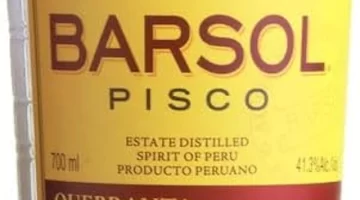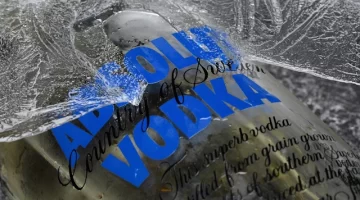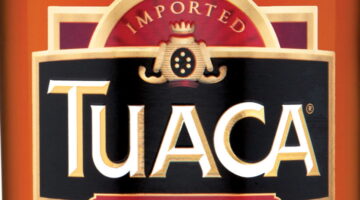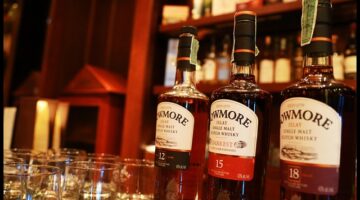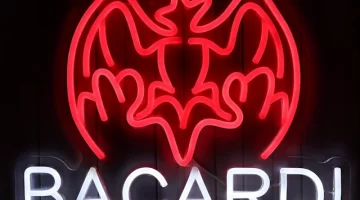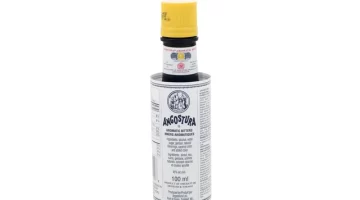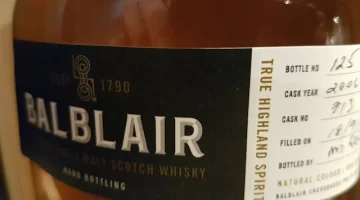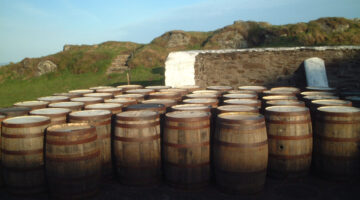Bourbon and Food Pairing
Travel Distilled looks at bourbon and food pairing, including bourbon and cheese and bourbon and chocolate, in an extract from the book Bourbon for Beginners.

Bourbon isn’t just for sipping on its own or using in cocktails, it makes a great pairing for various foods. If you enjoy entertaining, then once you’ve done some regular bourbon tastings you might want to invite friends round to try pairing bourbon with cheese, chocolate, or other foods. You can also use it in cooking.
Pairing Bourbon and Cheese
When it comes to bourbon and cheese pairings, it’s important to consider the flavors, textures, and intensities of both the bourbon and the cheese. The high fat content of cheese stands up well to the proof of bourbon, and the pairing can bring out subtle flavors in the whiskey while enhancing the cheese’s taste. It’s recommended to experiment with different combinations and find your preferences.
You can create a cheese board with a variety of cheeses, such as soft cheese like Brie, sharp aged cheddar, harder aged cheese like Pecorino or Parmigiano-Reggiano, and blue cheese. Accompany the cheese board with a selection of bourbons, including wheated bourbon, barrel-proof bourbon, high-rye bourbon, and well-aged bourbon. Additional accompaniments like plain crackers, roasted nuts, dried fruits, olives, or fresh grapes can add more variety and enhance the tasting experience. Remember to allow the cheese to come to room temperature before serving for optimal flavor.
When pairing bourbon with cheese, there are several options to consider. Here are some recommendations to start you off. If you’re planning on doing a bourbon and cheese pairing with friends, you’ll need to do your homework first and taste a lot of cheese and sip a lot of bourbon. Decide on your bourbons first, as it’ll be much less expensive to sample several cheeses to find the perfect match.
Four Roses Single Barrel: This bourbon is recommended for pairing with aged cheese, as its balanced and complex aromas complement the flavors of aged cheese, particularly the sweet tobacco, warm spice, and earthy rye aromas.
Willett Rye: This bourbon pairs well with creamy Brie as the sweet, fatty and mellow Brie complements the spice of the rye, creating an excellent combination.

1792 Sweet Wheat: This sweeter bourbon works well with lighter cheeses. The vanilla notes from oak aging intensify the flavor of the cheese without overpowering it. Choose bourbons that are less than 45% ABV (90 proof) to avoid overpowering the cheese’s flavor.
Woodford Reserve: This bourbon, with its notes of toffee, honey, and white pepper, pairs nicely with aged Goudas and Alpine-style cheeses like Comté and Gruyere. It also complements fresh goat cheese, washed rinds, and even a grocery store cheddar.
Pairing Bourbon and Chocolate
Pairing bourbon with chocolate can create a delightful combination of flavors and enhance the overall tasting experience. I did a wonderful whisky and chocolate pairing session at the Spirit of Speyside Whisky Festival one year, and the mellower flavors of bourbon are even more suited to the experience. Both bourbon and chocolate have shared chemistry in terms of their flavor compounds, making them complementary to each other. Here are some guidelines and tips for pairing bourbon with different types of chocolate.

White Chocolate: The high fat content in white chocolate can help temper the heat of full-proof bourbon. Consider pairing it with bourbons like Booker’s or Stagg, or look for other cask-strength bourbons.
Milk Chocolate: The smooth balance of sweetness and richness in milk chocolate pairs well with spicy bourbons such as Bulleit 10 Year and Elmer T. Lee.
Semi-sweet Chocolate: With a cocoa content of 55% to 70%, semi-sweet chocolate harmonizes with complex and balanced bourbons like Four Roses Single Barrel and Maker’s 46.
Extra Dark Chocolate: These chocolates have the greatest depth of flavors but also a touch of bitterness. They provide a counterpoint for sweet, full-bodied bourbons like Russell’s Reserve 10 Year and Woodford Reserve Double Oaked.
It’s important to note that these are just general guidelines, and your personal preferences may vary. You can experiment with different combinations to find your own favorite pairings.
Don’t miss my companion piece, Cooking with Bourbon.
Additionally, different types of chocolates can enhance the bourbon tasting experience. High-quality chocolates such as Godiva, Guittard, TCHO, Dagoba, and Grand Marnier Dark Chocolate are recommended for pairing with bourbon. These chocolates offer rich flavors and textures that complement the caramel, vanilla, and other notes found in bourbon.
In summary, pairing bourbon with chocolate can be a delightful and indulgent experience. By considering the flavor profiles of both bourbon and chocolate, you can create unique combinations that enhance the enjoyment of both. Whether it’s matching the intensity of chocolate with the strength of bourbon or exploring different types of chocolates, the possibilities for bourbon and chocolate pairings are endless. Do a little work beforehand, and a bourbon and chocolate pairing will be a brilliant ending to a dinner with friends.

Hosting Bourbon Tasting Parties and Events
This inevitably repeats a lot of the advice from the Introduction, about keeping your own personal tasting notes. If hosting a group bourbon tasting – and they are a lot of fun – then you’ll want to pay more attention to the choice of bourbons, being sure to pick a theme, and you may want to have four or five bourbons ready instead of three, to make for a really enjoyable night.
Choose the bourbons: Select the bourbons you want to taste. You can choose a theme such as bourbons from a specific region, bourbons with similar characteristics, or different expressions from the same distillery. It’s recommended to compare a maximum of three bourbons at a time to ensure your palate can distinguish the flavors effectively.
Prepare the tasting environment: Set up a well-lit room with a white backdrop for evaluating the color of the bourbon. Choose tulip-shaped glasses for the tasting, as they help concentrate the aromas. You may also consider using Glencairn Whisky Glasses for a more authentic tasting experience. These have become an industry standard glass for tasting all kinds of spirits, not just whisky. They’re even used for tequila tastings.
Assess the color: Pour the bourbon into the glass and observe its color. Swirl the glass gently to observe any tears or legs running down the sides. Hold the glass against a white backdrop to assess clarity and transparency. Take note of the color’s intensity and any unique characteristics.
Evaluate the aroma: Warm the glass in your hands for a moment, then swirl the bourbon gently to release its aromas. Take short sniffs to assess the intensity and character of the aroma. Consider using descriptors like fruity, floral, spicy, or oaky. Compare the bourbon’s aroma to your expectations and note any pleasant or distinctive scents.
Assess the mouthfeel: Take a sip of the bourbon and pay attention to its texture and body. Evaluate how it feels in your mouth, noting characteristics like creaminess, smoothness, or any specific mouth sensations. Consider how the texture aligns with your visual assessment of the bourbon.
Identify the taste: Analyze the primary tastes experienced on your tongue. Note any sweetness, sourness, saltiness, or bitterness. Additionally, pay attention to secondary flavors that may be perceived through the nasal passages, such as fruitiness, spiciness, or smokiness. Capture the overall flavor profile, including both primary and secondary tastes.
Evaluate the finish: Observe the flavor that lingers in your mouth after swallowing. Assess the duration of the finish, categorizing it as short, medium, or long. Note any distinct flavors that emerge during the finish and their overall impression. Consider how the finish contributes to the overall enjoyment of the bourbon.
Additional notes: In addition to the structured assessment, feel free to include any additional observations or personal preferences. This can include the bourbon’s complexity, balance, uniqueness, or any other factors you find noteworthy.
Record your tasting notes: Use a tasting sheet or a template to record your observations systematically. You can create your own template or use existing resources available online, such as the bourbon tasting sheet provided by Breaking Bourbon. Note the name of the bourbon, the date of the tasting, and any relevant details about the bourbon’s production, including age, proof, and distillery.
Remember, tasting notes are subjective and vary from person to person. Your personal preferences and experiences play a significant role in your assessments. Over time, comparing your notes can help you develop a deeper understanding of bourbon and your own preferences.


